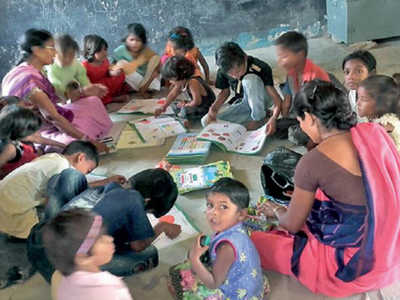 As women, we may have a fascination for pink and orange over blue. After years of working in the social development sector, we reflected upon how and why we developed a liking for these colours and not so much for the other. We asked young men around, and heard back, “because that is how it is — boys prefer blue and girls prefer pink”. That was not convincing enough.
As women, we may have a fascination for pink and orange over blue. After years of working in the social development sector, we reflected upon how and why we developed a liking for these colours and not so much for the other. We asked young men around, and heard back, “because that is how it is — boys prefer blue and girls prefer pink”. That was not convincing enough.
Going down the memory lane, we realised that it was not just about colour choices, but also with other things like toys and girl children expected to learn domestic chores – “certain things were meant for boys and others for girls” — these were often different things and ways of being.
Our attitudes and perception of gender get formed very young – at about five years of age — as studies have shown. Children are quick to internalise gender roles, norms, discrimination and stereotypical behaviour by observing their parents, family members and society around them, to internalise, and start practicing, many times without much understanding how it affects them and their peers. Thus, blue for boys and pink for girls somewhere become a norm for selection by a parent, rather than allowing their children to experiment with the wide colours spectrum.
In these formative years, the behaviour of children gets conditioned. Very often, it is difficult to change or realise that a change is required when a child moves to adulthood. Practices become rigid and translate to gender discrimination and result in the perpetuation of inequalities, even neglect, abuse and violence.
Today, there is a huge unmet need for teaching gender equality as part of the Early Childhood Curriculum. This needs to be more than classroom teaching: A learning environment at home that doesn’t encourage stereotyping on the basis of gender is as important. We need to include gender-sensitive parenting and target parents, both father and mother, as being the first role models for their children. How does this happen in a home setting? There are many interesting ways this can be made part of the curriculum. Teach children gender-sensitive language and behaviours rather than discriminating between genders.
Let us start by breaking the cycle of reinforcing son preference by addressing daughters as “betis” and not “betas”. Children learn to appreciate gender diversity and they will grow by respecting others for their potential, and not for their gender identities. Be the role model by showing children that both mothers and fathers can share domestic chores and responsibilities — which will not only increase bonding within the family but may also encourage mothers to spend some quality time by engaging her time to pursue things of her interest, and her identity beyond the stereotyped roles is respected. Teach your child sportspersonship that losing and winning is part of life — doesn’t matter if it is against a boy or a girl. Allow children to play or engage in games of their interest and not based on being a boy or girl. It will allow them to build a spectrum of skills, emotional, cognitive and social, that will be essential to meet their day-to-day challenges as they grow towards adulthood. Let boys grow up realising that safety and security are as important for them as for girls. Rewrite that fairy tale by encouraging your daughter and son to re-look at the story that blue can be for girls and pink can be a choice of colours by boys.
If the home is the first school for any child, pre-school is the building block for every child. Pre-school education needs to be gender-sensitive. There have been many positive developments – for example, an increase in the number of girls coming to schools post gender equality sessions with parents in the community. Pre-school teachers’, including anganwadi Workers, understanding and capacity on gender equality needs to be enhanced so that they can embed and practise it in day-to-day learning. Gender-sensitive parenting for fathers and mothers would enable parents to challenge stereotypical harmful gender norms and adopt positive equitable practices for their children. Growing in such an enabling environment would help children grow with behaviours that are sensitive and nurturing, and not with aggression and violence.
A child, particularly a boy, growing up in a gender-sensitive environment, is more likely to respect and share power with his/her siblings, friends, and as an adult enjoy a healthy equal relationship with his/her spouse and intimate partner rather than use abuse and violence. Boys raised with a gender-equal lens are also more likely to grow up to be sensitive and better allies of women. It is high time that children have access to storybooks and learning materials that are gender-sensitive, rather than re-enforcing gender inequalities.
A little effort can bring several long-term benefits, impacting many indicators, to promote gender equality.
Courtesy : Ipsita Das and Radha Chellappa

